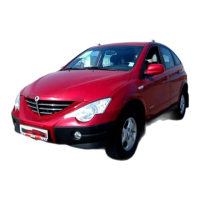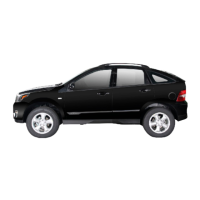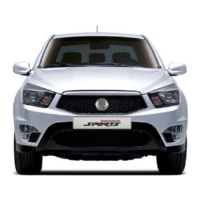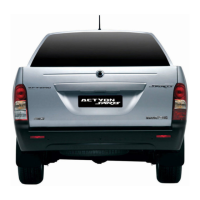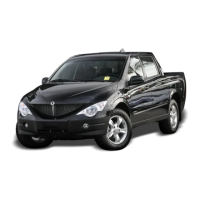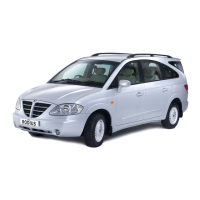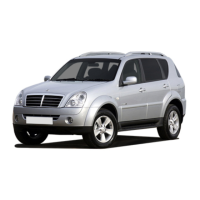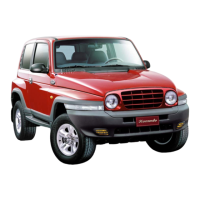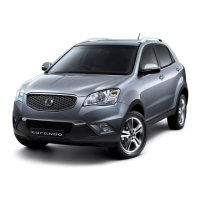SEAT BELT AND AIR BAG
8-8
0
1
2
3
4
5
6
7
8
9
10
11
12
13
14
15
16
CHILD RESTRAINTS
When transporting infants or small children, an appropriate child restraint
system should always be used. The child restraint system should be ap-
propriate for your child’s weight and height and properly fit the car’s seat.
Accident statistics indicate that children are safer when properly restrained
in the rear seat rather than in the front seat.
PREGNANT WOMEN
We recommend that pregnant women
use the seat belts throughout their
pregnancy. Keeping the mother safe is
the best way to keep the baby safe.
CHILD RESTRAINTS AND PREGNANT WOMAN
• Infants and tiny children should always be restrained in an infant or child restraint.
• NEVER INSTALL A REAR-FACING CHILD RESTRAINT IN THE FRONT SEAT WITH
FRONT PASSENGER AIR BAG.
• A child in a rear-facing child restraint installed in the front seat can be seriously
injured if the front passenger air bag inflates. Secure a rear-facing child restraint
in the rear seat.
• A front-facing child restraint should be secured in the rear seat whenever possible.
If installed in the front passenger seat, adjust the seat as far back as it will go.
• When installing a child restraint system, follow the instructions provided by the
manufacturer.
• When your child restraint is not in use, secure it in the vehicle with the seat belt or
remove it from the vehicle.
• In a collision an unrestrained child, even a tiny baby, can become a missile inside the
vehicle. The force required to hold even an infant on your lap can become so great
that you could not hold the child, no matter how strong you are.
• Do not allow a child in the cargo areas while the vehicle is moving.
• If the shoulder belt contacts the face or neck, move the child closer to the center of
the vehicle. Never allow a child to put the shoulder belt under an arm or behind their
back.
• Please note that the three point seat belt is designed for a person who is taller than
140 cm.
WARNING
• Pregnant women should wear the lap
part of the belt across the thighs and
as sung across the hips as possible.
• Keep the belt low so that it does not come
across the abdomen. That way the strong
bones of the hips will take the force if
there is a collision.
WARNING
C100_RHD_08-Seat Belt and Air Bag.p65 2006-05-16, ¿ÀÈÄ 8:308
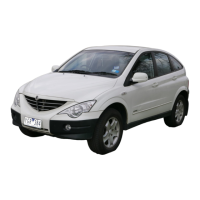
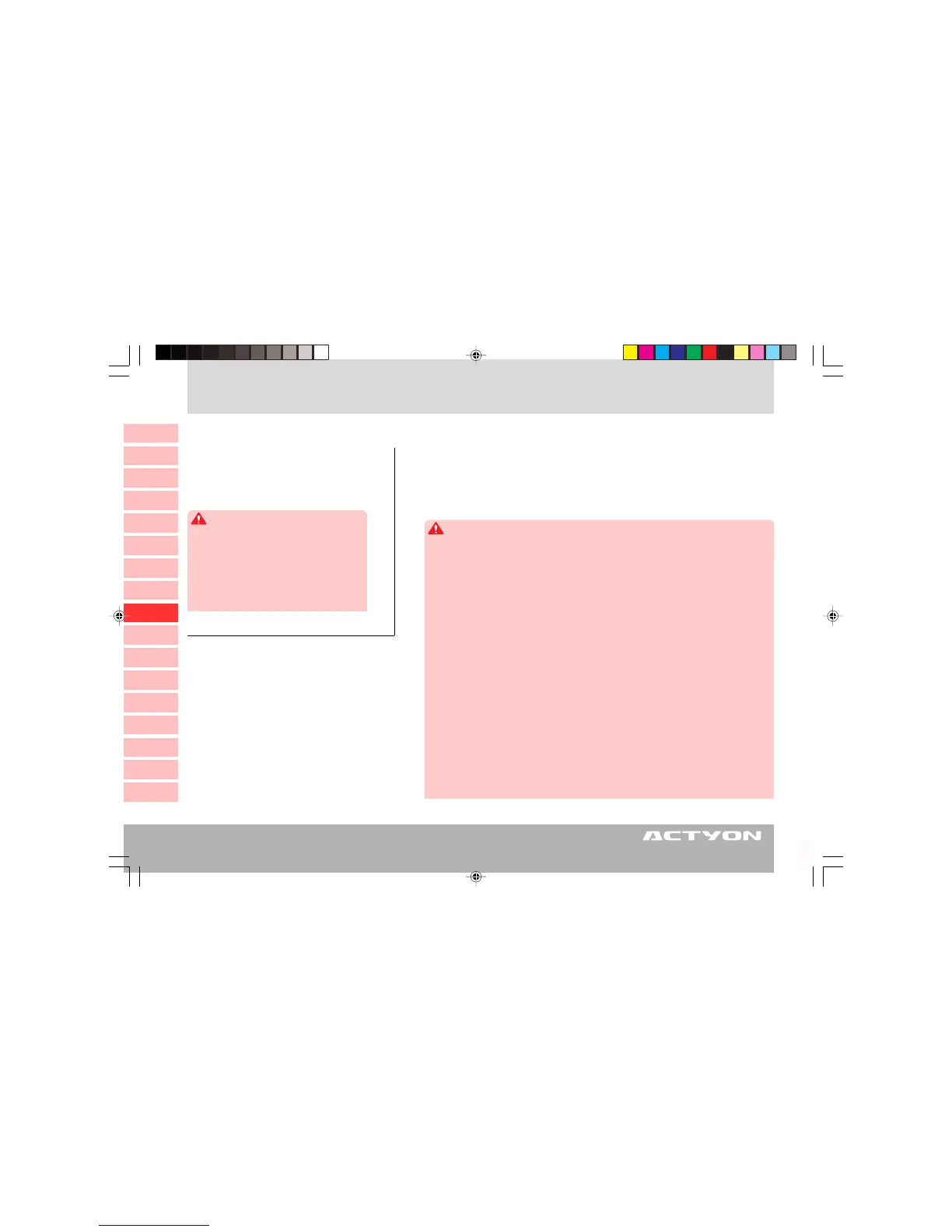